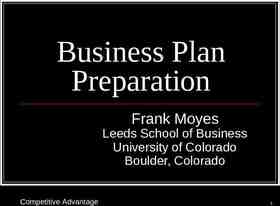Construction Noise & Hearing Loss Prevention 30 Minute Elective
31 Slides4.67 MB
Construction Noise & Hearing Loss Prevention 30 Minute Elective Module 1
Goal Provide the necessary training to identify a noise hazard, understand the risk for hearing loss, and know what steps should be taken to work safely to prevent hearing loss 2
After completing this training you will be able to: 1. Explain why noise and hearing loss is an important issue for construction workers 2. Recognize the signs and effects of hearing loss and tinnitus 3. Identify hazardous noise, types of noise, and common noise sources 3
After completing this training you will be able to: 4. Know how to measure noise using common indicators and free mobile applications (apps) 5. Describe several ways to control noise exposure 6. Understand the different types of hearing protection devices used in construction and how to use them correctly 4
Why care about hearing loss? 5
6 Have you experienced the following Have trouble hearing people talk when there is background noise People sound like they are mumbling Often have to ask people to repeat what they say Turn up the radio or TV a lot Have difficulty hearing people on the phone Have constant ringing in your ears
7 Tinnitus Ringing in ears (or hissing, buzzing, roaring, chirping, or whistling sound) 50 million people in the U.S. have tinnitus
8 Are You Talking to Me? What it’s like to lose your hearing Developed by and used with the permission of Dr. Robert M. Ghent and Brad K. Witt of Honeywell Safety Products, San Diego, CA.
9 Developed by and used with the permission of Dr. Robert M. Ghent and Brad K. Witt of Honeywell Safety Products, San Diego, CA.
10 Developed by and used with the permission of Dr. Robert M. Ghent and Brad K. Witt of Honeywell Safety Products, San Diego, CA.
11 Developed by and used with the permission of Dr. Robert M. Ghent and Brad K. Witt of Honeywell Safety Products, San Diego, CA.
12 Exercises 1 2 3 Word 1 Star Star Star Word 2 Few Few Few Word 3 Bathe Bathe Bathe Word 4 Cap Cap Cap Word 5 West West West Word 6 Thin Thin Thin Word 7 Farm Farm Farm Word 8 Pie Pie Pie Word 9 Three Three Three Word 10 Gave Gave Gave
13 Effects of Hearing Loss Temporary hearing loss Difficulty hearing warning signals on the job Increase the risk of falling Contribute to loneliness and depression Increase stress, blood pressure, hypertension and cardiovascular disease Lead to nervousness, sleeplessness and fatigue 13
14 What causes hearing loss? Exposure to loud noise Certain drugs and chemicals Aging Heredity Head injury Headphone use Childhood illness Photo courtesy of the International Masonry Institute & OSHA
15 How do you know if it’s too loud at work? You have to: Shout to be heard an arm’s length away (2-3 feet) Turn equipment off to be heard Move to another location to talk & be heard Turn up the car radio at the end of the day
16 How Sound Is Measured Sound is measured in units called decibels (dB) using A-weighted sound levels (dBA) A reduction of 3 dBA cuts the noise energy in half
17 OSHA Noise Limits In Construction Permissible Noise Exposure Limits (dBA) Duration per NIOSH OSHA day in hours (recommended) (Construction Standard) 8 4 2 1 ½ ¼ 85 88 91 94 97 100 Source: NIOSH, Occupational Noise, Revised Criteria, 1998. Table 1-1, and OSHA, 1910.95 (b)(2); Table G-16 90 95 100 105 110 115
Noise Levels NIOSH Power Tools Database: https://www.cdc.gov/niosh/topics/noise/noise levels.html 18
Noise Measurement Devices PERSONAL DOSIMETER iPhone https://www.cdc.gov/niosh/to pics/noise/app.html Android SoundMeter App IN-EAR DOSIMETER Source: State Building & Construction Trades Council of California, AFL-CIO: Construction Noise & Hearing Loss Prevention training program, Funded by Federal OSHA, 2015 (courtesy of Howard Leight, Honeywell). SOUND LEVEL METER Source: State Building & Construction Trades Council of California, AFL-CIO: Construction Noise & Hearing Loss Prevention training program, Funded by Federal OSHA, 2015 (courtesy of Howard Leight, Honeywell). 19
20 Sound Level Meter Apps NIOSH SLM for iPhones https://itunes.apple.com/us/app/nioshslm/id1096545820?mt 8Iphoneapp Sound Meter for Android https://play.google.com/store/apps/deta ils?id com.gamebasic.decibel
21 Ways To Control Construction Noise Source: NIOSH Workplace Safety & Health Topics, Controls for Noise Exposure
Examples of Engineering and Administrative Controls for Noise Engineering controls Low noise equipment Barriers and enclosures Noise suppression on equipment Mufflers Maintain equipment Belts Lubrication Administrative controls Signs Designated areas for noisy tasks Strategic placement of loud equipment 22
What Employers Should Do to Protect You Plan: Before the job starts identify noisy tasks and equipment and plan for controlling noise – including buying or renting quieter equipment. Each day - do a walk-around inspection to make sure the plan is being implemented Monitor noise levels Provide different types of hearing protection - one size or style may not fit all workers Conduct training on each type of hearing protection provided 23
24 Types of Hearing Protection Foam (formable) plugs Reusable earplugs Custom molded plugs Banded or semi-aural Earmuffs Source: State Building & Construction Trades Council of California, AFL-CIO: Construction Noise & Hearing Loss Prevention training program, Funded by Federal OSHA, 2015 (courtesy of Build It Smart )
Advantages & Disadvantages of Different Types of Hearing Protection Type Noise Reduction Advantages Disadvantages Foam Plugs/ Moldable High Readily Available -Hygiene Issues -Take Time to Fit Reusable (Preformed Plugs) Mid Quick Fit -Costly to replace Banded/ Semi-aural Low Quick Fit -Uncomfortable -If the band is hit it transfers sound to the ear Earmuffs High Quick Fit -Hot, heavy, cumbersome Custom Low to Mid Quick Fit -Costly -Replace in 3-5 yrs Source: State Building & Construction Trades Council of California, AFL-CIO: Construction Noise & Hearing Loss Prevention training program, Funded by Federal OSHA, 2015. 25
Care and Maintenance Foam roll plugs dispose of foam roll plugs after each use Reusable plugs clean with soap and water, replace when damaged Custom plugs wash in mild soapy water 26
Care and Maintenance Banded or semi-aural Clean and replace pods regularly Earmuffs Wipe down with damp cloth, or remove cushions and wash in soapy water Replace cushions if torn or cracked 27
28 Noise Reduction Rating (NRR) NRR is measured in decibels The NRR is found on the earmuff or earplug package The higher the NRR number, the greater the protection Calculating the level of protection: (NRR – 7)/2 NRR reduction Exposure level – NRR reduction level of protection (33-7)/2 13 95dBA – 13 82 dBA (level of protection) Source: State Building & Construction Trades Council of California, AFL-CIO: Construction Noise & Hearing Loss Prevention training program, Funded by Federal OSHA, 2015 (courtesy of WISHA)
Fitting An Ear Plug 29 1. Roll entire earplug into a creasefree cylinder 2. Pull Back ear by reaching over head with free hand, gently pull top of ear up and out 3. Insert earplug well into ear canal and hold until it fully expands Source: State Building & Construction Trades Council of California, AFL-CIO: Construction Noise & Hearing Loss Prevention training program, Funded by Federal OSHA, 2015 (courtesy of Howard Leight, Honeywell )
What we covered The Risk for Hearing Loss How to Identify Noise Sources Measuring Noise Ways to Control Noise Hearing Protection Devices Real Life Lessons 30
31 Acknowledgments State Building and Construction Trades Council of California Dr. Robert M. Ghent and Brad K. Witt of Honeywell Safety Products, San Diego, CA. 2017, CPWR-The Center for Construction Research and Training. All rights reserved. CPWR is the research and training arm of NABTU. Production of this document was supported by cooperative agreement OH009762 from the National Institute for Occupational Safety and Health (NIOSH). The contents are solely the responsibility of the authors and do not necessarily represent the official views of NIOSH.







